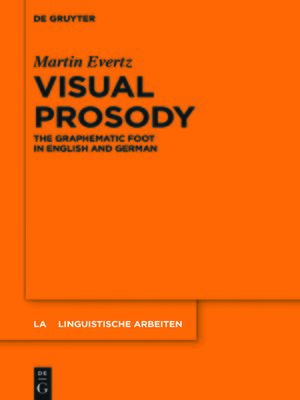Visual Prosody
ebook ∣ The Graphematic Foot in English and German · Linguistische Arbeiten
By Martin Evertz

Sign up to save your library
With an OverDrive account, you can save your favorite libraries for at-a-glance information about availability. Find out more about OverDrive accounts.
Find this title in Libby, the library reading app by OverDrive.



Search for a digital library with this title
Title found at these libraries:
| Loading... |
According to well-established views, language has several subsystems where each subsystem (e.g. syntax, morphology, phonology) operates on the basis of hierarchically organised units. When it comes to the graphematic structure of words, however, the received view appears to be that linear structure is all that matters. Contrary to this view, a sub-field of writing systems research emerges that can be called non-linear or supra-segmental graphematics. Drawing on parallels with supra-segmental phonology, supra-segmental graphematics claims the existence and relevance of cross-linguistically available building blocks, such as the syllable and the foot, in alphabetical writing systems, such as the writing systems of German and English.
This book explores the graphematic hierarchy with a special focus on the unit foot. Structural, experimental and databased evidence is presented in favour of this approach. In addition, analyses within the optimality theory framework are offered.
This work shows that the supra-segmental graphematic approaches are superior to linear ones with respect to explanatory strength and even preciseness of the description. It is thus interesting for academics concerned with writing systems and orthography teaching.






